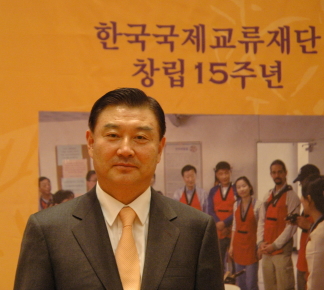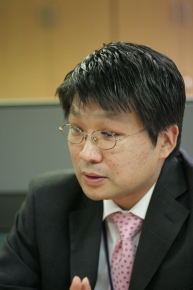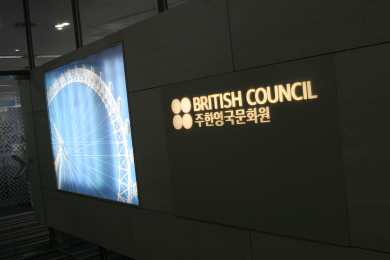Introduction of current Korea’s current cultural diplomacy at the governmental level
What is Culture Exchange?
Culture Exchange covers a wide range of interactions from teaching of certain languages and custom to even exchange student programs that are practiced in order to enhance the ability of understanding different cultures. It has gained its importance due to the rapid globalization and the exponential increase of interactions among countries. However, despite its present importance, culture exchange has long history.
In the ages of imperialism throughout the 18th and 19th century, interchanges between two countries or more were considered exclusively as a light way of approaching for colonization. However, with the arrival of the 21st century, Culture Exchange is being reevaluated from a totally new perspective. Culture is defined as the core of the “soft power,” which stems from the images and expectations that one country has for another.
Current Status of Culture Exchange
Since Cultural Exchange takes place between two different nations, it is very much influenced by the shifts in the international arena. Therefore most of the works are directed and monitored by MOFAT (Ministry of Foreign Affairs and Trade). “We approach culture diplomacy with a completely different view from the standard protocol of diplomacy for national security,” says Lee Eun-yong, the Director of the Cultural Cooperation Division of MOFAT. “It is crucial to fully understand that Culture Exchange is under the name of cultural diplomacy which is utilizing one country’s culturally valuable assets as an act of faith for better inter-relationship,” also adds Seo Eun-young, Second Secretary of MOFAT. Based on the statements of MOFAT, Culture Exchange is completely different from hard power, such as economic or military strength, in that it exercises as a back-up resource during international tension.
The main goal of MOFAT is fixed in portraying the “real Korea” as it is. “The gap between the past Korea and the present Korea is immense. We are putting all our energies to present both the traditional as well as the current flow the Korean culture,” mentions Lee. In order to inform and publicize the “actual Korea,” CCD(Cultural Cooperation Division) of MOFAT is endeavoring in distinctive, but necessary propagandas. First of all, it introduces Korean culture to foreigners through delegations of cultural performers. Last year MOFAT sent traditional dancers and musicians to Africa to publicize our music and dance. Despite this year’s budget reduction, MOFAT managed to expand cultural exchanges from 34 countries to 44 countries. Secondly, CCD is striving to spread the research of Koreanology, the study of *Hangul*, mainly by the help of KF (Korea Foundation). Thirdly, personal interchange among various countries is also attempted. The Youth Organization is working on dispatching young leaders of Korea as well as inviting youngsters from different regions to actually see and learn from experience. Finally, following the “2005 Protection of the Diversity of Cultural Contents,” the government is trying hard to publicize that Korea is putting their utmost efforts in dedication for international cultural exchange. Plans for luring the 2014 Winter Olympics and 2011 World Championship in Athletics are all forming a part in culture diplomacy of Korea. These huge events are a good chance to enlarge worldwide cultural recognition.
Korea Foundation’s Work
An affiliated organization of MOFAT, KF, which was founded in 1991, is playing an enormous role in gathering worldwide publicity of Korean culture. KF mainly devotes all their energy to introducing the traditional aspects of Korean culture, as well as the present flow, known as the “Korean Wave.” KF’s work is mainly focused on supporting universities, such as Oxford and Harvard to ultimately sustain the Korean language majors in those schools. KF is also coopering with universities in Korea, including Yonsei Univ. to teach the Korean language to exchange students with assistance from the Korean Language Institute.

KF is also the pioneer to be keep tracking of how many Korean assets have been sent to overseas museums. Based on this research, KF managed to form strong cooperative relationships with three major museums - Metropolitan, Louvre and British museum. These museums are famous in Korea for having an exhibition room of Korean artifacts as well as a curator who is in charge of providing information. This year KF is planning to open another full-size Korean Exhibition Room in the Smithsonian National Museum of History in Washington, D.C. KF also carries out works in multiple fields related to Korea’s general culture such as publishing books which introduce Korean food and research on cultural treasures. Specifically in the year 2006, KF made a brochure introducing Korean food, managing to standardize the different names used to call one same dish.

KF’s present President Yim Sung-joon is emphasizing public concern and effort, which will eventually lead to the company’s fund-raising and civil funding. For example, Nissan, one of the finest car companies of Japan is solely supporting and opening a museum in the States with their own funds to promote their national image. Unfortunately enterprises of Korea such as Samsung and Hyundai are reluctant to using the so-called “Korea brand power” along with their selling since Korea Brand image is lower than their corporate brand image. However, it is never too much to make expectations when looking upon the last year’s case where several prestigious companies donated to the Koreanology Dept. of in Oxford Univ. in England to keep its department form closing. “I am glad to see that KF’s efforts to draw company’s money and fame as support for Korea culture plan is paying off,” remarked Yim, expressing his happiness.
Significance of Cultural Diplomacy
Nowadays, Korea’s Culture Exchange is often held with so called wealthy and advanced countries. However, thanks to dramas, movies and K-pop; countries such as Africa, Latin America, and Southeast Asia are showing great interest in Korean culture. Despite their enthusiastic consumption of Korean culture, however, it is short of supply. For culture support in these regions, according to Lee “are ineffective unless the government takes charge. Unless we are the core participants, Culture Exchange at civil level has a small impact since there is so few infrastructure, such as cultural organizations like BC (British Council).” Only when Culture Exchange and culture diplomacy are done at the governmental level, financial and systematic support becomes available.
Moreover when the government organizations come into action, the distortion of Korean Culture can be prevented. For example, Korea’s mega entertainment companies initiated the Korean Wave, therefore its risk of the possibility for over emphasis on marketable and profitable culture is very high. “We can prevent the distortion of Korean culture by continuing the support for Korean Wave at administration level by restricting the market from overheating” also commented Lee.
 | ||
| ▲ Culture diplomacy is all about introducing the real Korea | ||
There is even a greater reason why Culture Exchange and cultural diplomacy is necessary. The overall recognition of culture diplomacy is unimaginably low in our society, which is proven by the fact that the British have ten times more overseas culture centers than Korea. Although Korea is ranked as the eleventh wealthiest country in OECD, we score somewhere around the low ‘60s in cultural notification. This shows the gap between our culture status and economic status. In the course of the 21st century, this disparity would function as a negative factor in global businesses and brand power. Raising the cultural level and engraving the “Korea Brand” in the international society will eventually have a positive influence both politically and economically in the long run. “Culture Diplomacy will be the cornerstone for economic progress as well as in amicable political relationship. This is why we need to focus on Culture Exchange with various countries, expanding our culture diplomacy,” emphasized Yim. “In today’s world it is more about how we sell our country image. Designing a “Korea Brand” is crucial in taking the lead in the competitive world,” added Yim.
Long way to go
In order for Culture Exchange to catch up the economic status we have several imminent areas for improvement. First of all, viewing culture as means to building friendship with other countries is urgently needed. Culture should not be viewed as a possession of one country or nation. Interactions among different cultures can eventually lead to appreciating the diversity of them. “We shouldn’t stop in just spreading the greatness and creativeness of our culture, but we should also prepare to accommodate other countries’ culture as well,” mentions Yim. Therefore, systematic education of cultural sensitivity and enhancing of comprehensive capacity to young leaders of Korea are essential. When cultural sensitivity is gained, public attention and participation would naturally follow.
Secondly, current Culture Exchange is more focused on introducing the traditional sides of Korea, which can be seen MCT’s designating of the eight traditional products including *hanbok* and *hangi*, in 2006. However, as we enter the era of multi-media and information, finding new cultural contents in this field is required. Various attempts to use our advanced technology would be important in today’s information-oriented society.
Finally, enlarging governmental support, to increase the present condition to the level of Japan and France would enable MOFAT, KF and many other international Culture Exchange associations to execute extended plans. As an example, KF is striving to find new roots in ensuring revenue sources from MOFAT, since the foundation fund is also shared with OKF (Overseas Korean Foundation) starting last year. Although Culture Exchange does not produce new profit, it surely has a positive impact on our economy and political stance.
* * *
In the hard times of Japanese Imperialism, spiritual leader of Korea, Kim-Gu, made the famous and still-quoted speech. “The only thing that I desire in infinite quantity is the power of a highly-developed culture. This is because the power of culture both makes ourselves happy and gives happiness to others.” As he said, culture constitutes the fundamental and basics of our lives despite all the difference. This is exactly why Culture Exchage, the effort to understand others and strengthen global friendship is necessary. Last year there were numerous cultural events to commemorate, such as the 120th anniversary for the establishment of diplomatic ties between France and Korea. Nevertheless this year countless events are being planned to celebrate the 15th anniversary of China and Korea’s diplomatic relationship starting this April. Wouldn’t it be nice if you became a part of this blossoming cultural flow of Korea?

As we greet the 21st century’s catch phrase of globalization, culture exchange among future leaders of Korea is booming. Governmental support in experiencing other nation’s culture directly is functioning as a good chance for youngsters to widen their view of the world and grasping the idea of culture exchange. This year MOFAT is hosting two main plans; Korea-Japan College Student Exchange Program, Korea-ASEAN Youth Exchange Program
-Related website, visit to learn more information www.youth.go.kr
-Lee Sun-min, student of Sookmyung Women’s Univ.
“I had an unforgettable experience in Czech Republic last year, and I hope more students make full use of this institution to broaden one’s mind.”

British Council in Seoul, Korea
BC (British Council) remains as one of the best culture centers compared to even France and Japan. BC is financially independent since they earn money running their own education programs for adults and youth. BC is well known for its divers cultural programs and support from the British government.- Address: 4F Hungkuk Life Insurance Building 226 Shinmunno 1-ga, Jongno-gu, Seoul
-Various Programs: English learning program, information center, it’s own English evaluation test, various events to inform the British culture to Korea
- Representative events: Magic Pencil (2007), Sylvie Guillem and Akram khan Sacred Monsters (2006), *Daejanggeum* Concert (2006)
- BC’s goal: “Becoming Friends with the people and the culture of one’s country.”

